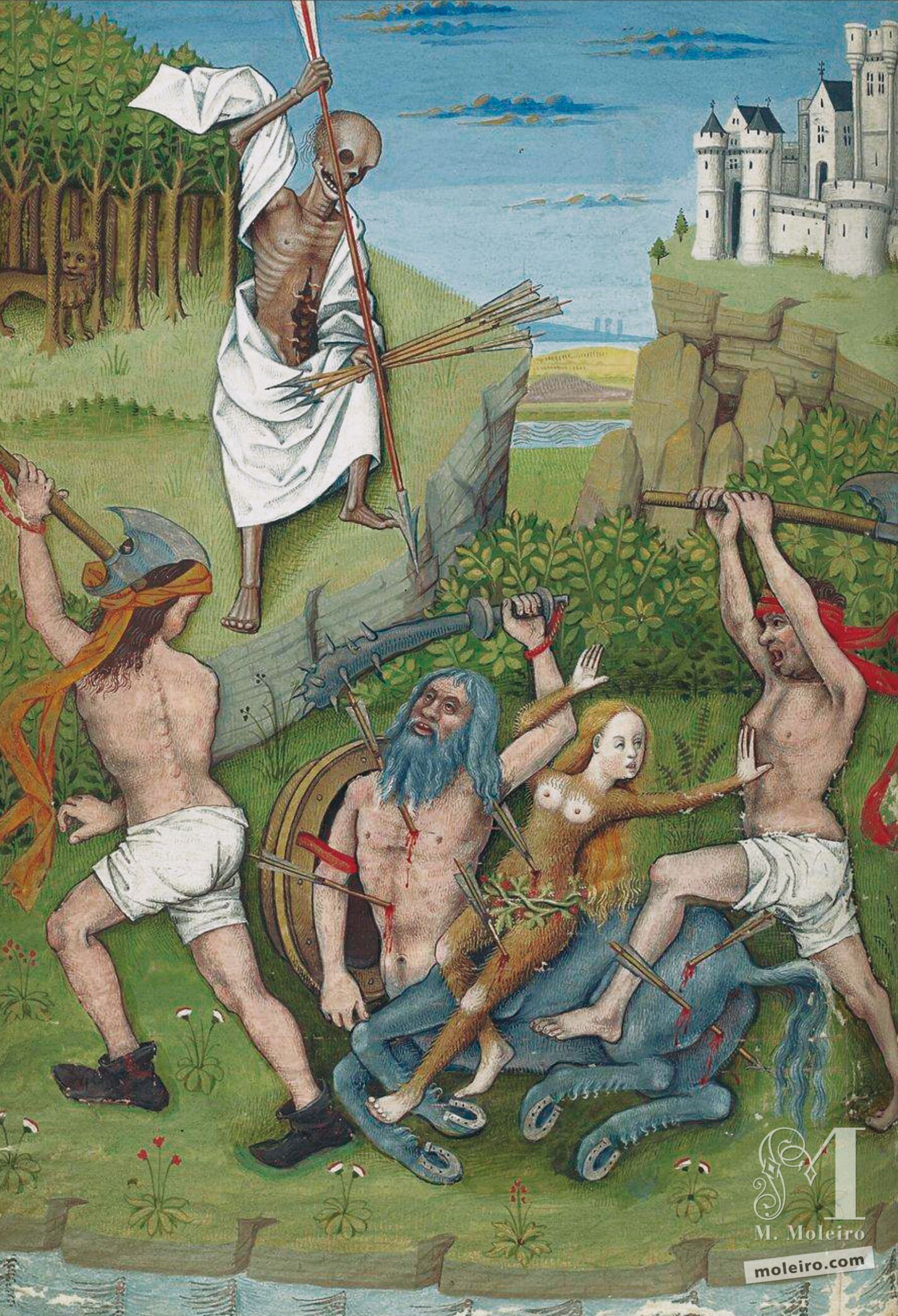This is undoubtedly the most peculiar illumination in the entire manuscript. A centaur with a wild woman on his back is attacked and about to be slain by two half-naked men wielding axes. But the arrows that have hit the centaur and his rider were fired by Death himself, a bony corpse above them aiming deadly arrows. Depicted on the left in the background is a lion wandering along the edge of a forest, and on the right, a castle on a promontory.
Death is the link between this illumination and the place where it appears, i.e. in the Office of the Dead, but this does not explain the rest of the composition, a strange combination of an Italian iconographic subject (the battle of the centaur) and a northern subject (the wild woman). Robinet Testard did in fact base his illumination on an engraving attributed to IAM, an artist who probably came from Zwolle in the Netherlands or worked there in 1470-1495. The engraving by IAM shows only the group in the foreground – the centaur, with no rider, and the two men – and was probably the first picture of a centaur in fifteenth-century, northern engravings. The theme of a centaur ravishing a young woman is to be found in many series of images about Hercules and the tale of his wife Deianira, a theme rediscovered by Renaissance artists whilst copying and studying the bas reliefs of antiquity. But Robinet Testard apparently sought to emphasise the northern rather than the Italian flavour of the composition by adding this wild woman so popular in fifteenth-century German art and engravings from the outset (particularly in the playing cards engraved using the burin technique in 1430-1440 by the Master of the Playing Cards, an artist active in the Upper Rhine area).
The figure of Death added to this scene is depicted as in illuminations from the 14th century onwards, e.g. the illustration of the famous passage of the three dead and the three living in the Psalter of Bonne of Luxembourg illuminated by Jean le Noir before 1349.The image in this instance is, therefore, a product of these different sources. Its meaning, however, remains obscure. Is it a moralising allegory of the triumph of death over beasts; or merely an artistic whim intended to demonstrate how knowledgeable and interested the manuscript illuminator and, perhaps, Charles of Angoulême were in the iconographic innovations of Germany and Italy, the two most dynamic hubs of production in the late Middle Ages?
Séverine Lepape
Curator
Musée du Louvre
